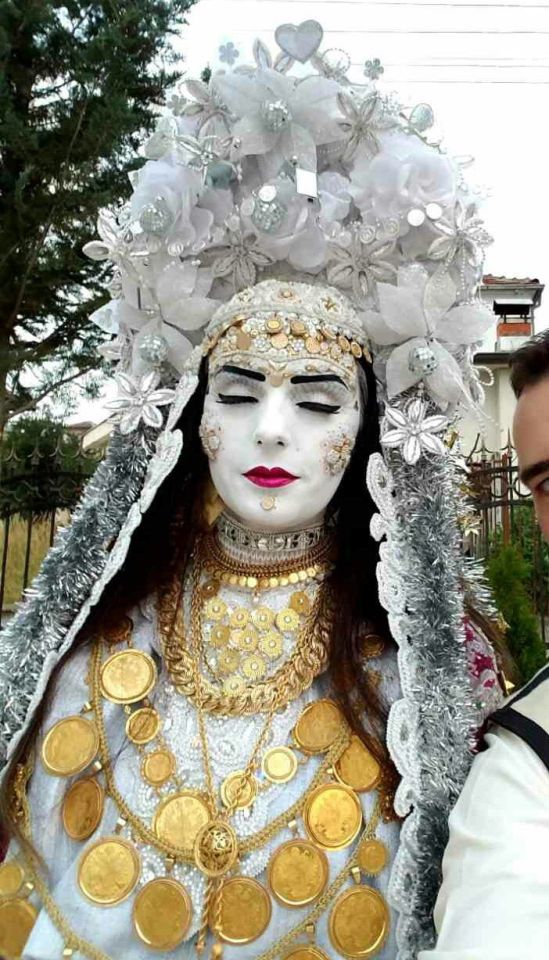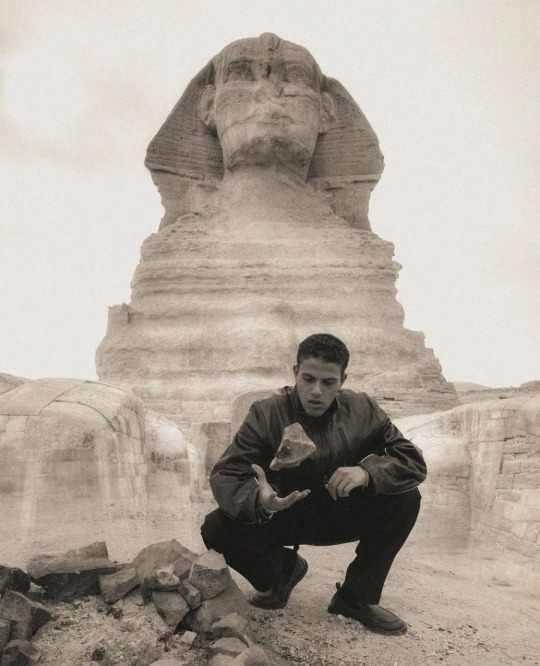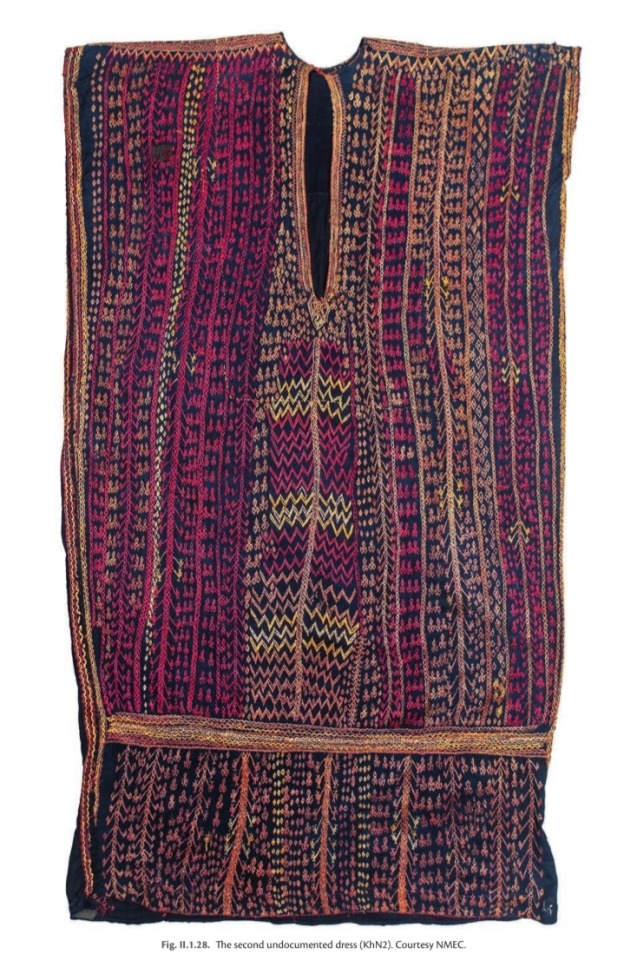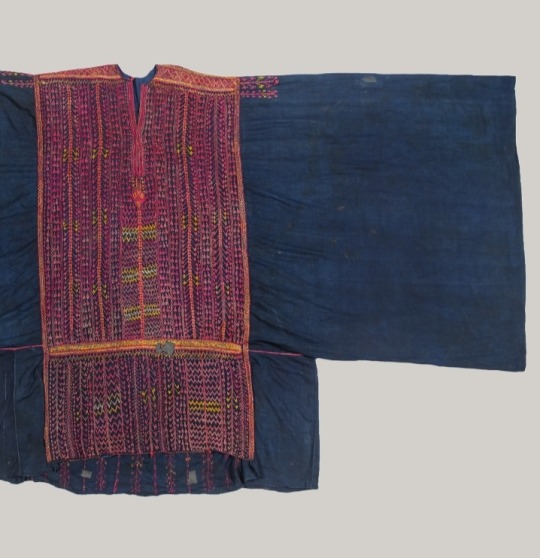#masr
Explore tagged Tumblr posts
Text
Bridal Telli- not just for the dress, but also the hair!



In the days when telli embroidery was worn by most Egyptian brides, many would also have two bunches of telli strips gathered on each side of the head. Shahira Mehrez, who had photos of several family members wearing these, describes them as "eight to ten centimeters in diameter and reaching to the floor [...]". As can be seen from the museum example, these were not always of such dramatic length. This tradition fell out of use in the first half of the 20th century for Egyptians. Unfortunately, despite photos of Egyptian brides from the 1930s onward not being particularly difficult to find, finding photos of brides wearing any telli whatsoever- embroidered or as hair ornaments- is rare. These three photos represent the only examples I've found in my time (6 years) independently researching Egyptian traditional dress so far.
Telli bunches for the hair, as well as "tinsel", are also used in Turkey and many Balkan countries.


[Turkish]


[Albanian]

[Pomak]

[Gorani]
It's currently unclear to me if this tradition was attached to the act of embroidering telli itself, and generally spread along with it, or if it originated in the Asia Minor and spread outwards. As can be seen on the modern bridal photos, it looks like cheaper Christmas tinsel made of plastic has replaced the metal strips that were originally used by many brides.
This tradition is rarely written about, so for Egypt the only sources I have are the blog post where the pink dress came from describing an exhibit (which has almost no detail, aside from this being a wedding outfit and the strips being telli), and "Costumes of Egypt: The Lost Legacies" by Shahira Mehrez.
41 notes
·
View notes
Text
They are about to demolish the Nabil darwish museum to build another fucking bridge
3K notes
·
View notes
Text

Chant Avedissian (Egyptian, 1951-2018), Cities of Egypt/Greetings from Masr, 1990s. Hand-coloured stencil on cardboard mounted on canvas, 252.5 x 155 cm.
405 notes
·
View notes
Text

"EGYPT CAIRO", 2008. by welyonlin.
12 notes
·
View notes
Text

"At Prayer", Cairo 1860s. by Jean-Léon Gérôme.
8 notes
·
View notes
Text

Your everyday escape... starts here .
#nubia#real estate#hurghada#masr#egypt#estate#NubiaLiving#LuxuryByTheSea#red sea#NubiaRealEstate#SeaViewLiving#NubiaDreamHome#“Tourism
4 notes
·
View notes
Text


abdallah diab shot by karim amr
3 notes
·
View notes
Text
The deepest most meaningful statement you've ever read in your life and it's a faded sticker on a rickshaw owned by a guy called hamdi
That picture of الشيخ الشعراوي is next to it..
4 notes
·
View notes
Text

📍Haret Al Saleheen - Cairo
Instagram: Ahmedmoatazsalah
#egypteveryday#everydayeverywhere#photoarena#streetphotography#mobileshots#photography#mobilephotography#cairo#thisisegypt#egypt#masr
7 notes
·
View notes
Note
favorite egyptian dish? 🇪🇬🇪🇬🇪🇬
THIS IS VERY HARD.
admittedly i've been exposed to only a limited number of dishes, but I'm lucky enough to say that when i went to egypt i got to try a lot of like. actual egyptian food and not just touristy fusion stuff.
koshari was probably my number 1. the whole experience of going to a koshari shop and having a meal and then getting roz bil laban was like. perfection.
i also had the best fucking sandwhich from gad, but i have no idea what it was called. my cousin ordered it for me, and it was like. yeah. impeccable. wasn't just shawarma, it was...idk man. fucking stellar.
however, all that said, very little beats ful for me as well, especially since this is also something i can make easily enough at home. ful for breakfast? gtfoh. top tier.
4 notes
·
View notes
Text
4 notes
·
View notes
Text









Dresses from the Kharga Oasis region, from Costumes of Egypt by Shahira Mehrez
The dresses of the Oasises are distinct from those of the Nile Valley, but they have similar details in their motifs, composition, and construction. Upper Egyptian Nile Valley dresses have a neckline outline of embroidery with a lozenge at the point, and a border a few inches away from that of embroidery, which fastens down the facing. This is present here (though the lozenge is sometimes omitted), and the second border is both generally enlarged, as well as having its point extended into a large diamond, which fastens down the facing. Upper Egyptian dresses also have a shoulder band, which is present here, though with different motifs. Both regions have vertically oriented lines of embroidery. The Kharga dresses have descending trefoils, chevrons, honey combs, and small crosses in common with Upper Egyptian embroidery. Though the Kharga dresses use plenty of red, it is not as predominant as it is in Upper Egypt.
Unlike Valley dresses, there is no evidence of telli being used in Kharga. Instead, faux coins are sewn on. These may be removed when dresses are sold so the original owner can keep them.



These older tob sebleh dresses are likely predecessors of the Kharga dresses, displaying similar color palettes, motifs, and composition details.
161 notes
·
View notes




